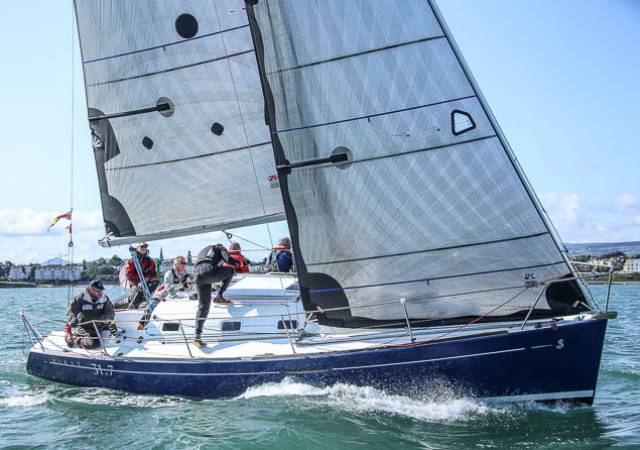Following on from his top tips articles for upwind and downwind helming techniques, UK Sailmakers Ireland agent and sailing professional/coach Mark Mansfield gives tips for prepping your race boat for the sailing season ahead.
Tip #1—Improve Bottom Finish
So many boats I have sailed on last season have bottom finishes that would range from average to poor. A poor bottom finish likely costs up to 2 % in speed at least which is 72 seconds an hour. Grand Prix boats will spend weeks prepping and fairing their bottoms and foils. This is over the top for Irish racing, but a very smooth bottom finish is easily achievable with a bit of time and effort.
Spraying two or three coats of hard antifouling, like Nautix, on a smooth sanded bottom would be best, then allowing it to harden for a few weeks, then sanding it back with a light 600-grade sandpaper will get a great finish. Even applying it with a very good roller will work nearly as well, especially if you sand it afterwards.
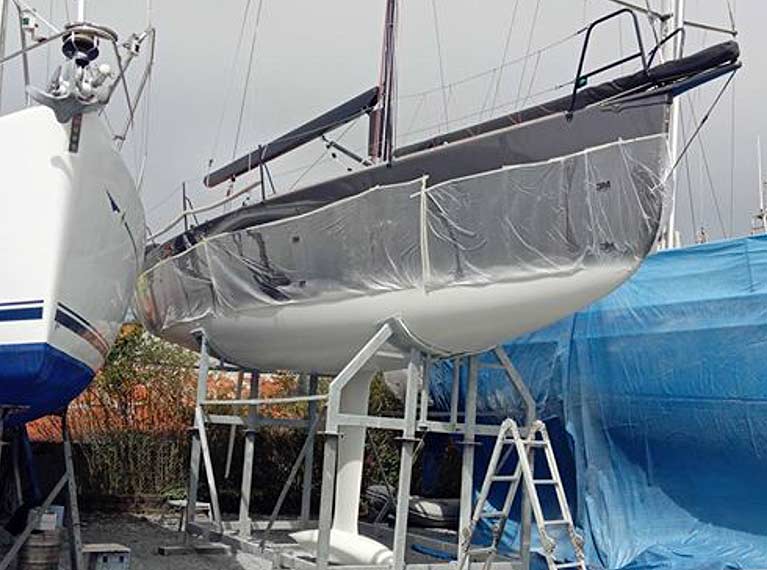 Cruiser Zero campaigner Jump Juice gets her bottom prepped by Colm Dunne of Yacht Services Ireland Photo: Facebook
Cruiser Zero campaigner Jump Juice gets her bottom prepped by Colm Dunne of Yacht Services Ireland Photo: Facebook
Tip #2—Get Sails Remeasured
If you sail IRC, your largest sails should be remeasured reasonably regularly, as sails shrink, particularly headsails. Most of this shrinkage happens in the first few months when new, but it is not unusual for a boat to drop two points or more in rating, after remeasuring, which is a gain of seven to 10 seconds an hour. Jib luff lengths and both Jib and mainsail girths regularly drop in size. Spinnakers rarely shrink, so best to just do the largest upwind sails. Dropping the sails into your sailmaker is well worth the effort and relatively small cost and the sails can also be inspected at the same time. UK Sailmakers are an In-House Certification (IHC) sail loft so your sails are endorsed and measured by certified IRC - ORC and ISAF professionals. Contact UK Sailmakers (details at the foot of this article) if you want to organise to get your biggest sails remeasured.
Tip #3—Upgrade Running Rigging
So many times I go aboard boats when tuning their Rig or doing some Coaching and I find halyards and Sheets not fit for purpose. In very many cases the halyards are too stretchy, are oversized and heavy or are hard from salt and UV damage. Likewise with jib and spinnaker sheets. Rope technology has moved forward a lot in recent years and keeping weight out of the top of the mast is a priority. If possible, backstays can be changed from wire to Dyneema, large main halyards can be changed to a lighter 2:1 alternative. Heavy metal shackles can be changed to light soft shackles. Never knot a jib sheet or halyard as they will break easier and because it is a knot it is hard to reproduce settings later. Specialist Rope providers such as Rope Dock in Dublin can easily customise an updated package for an owner.
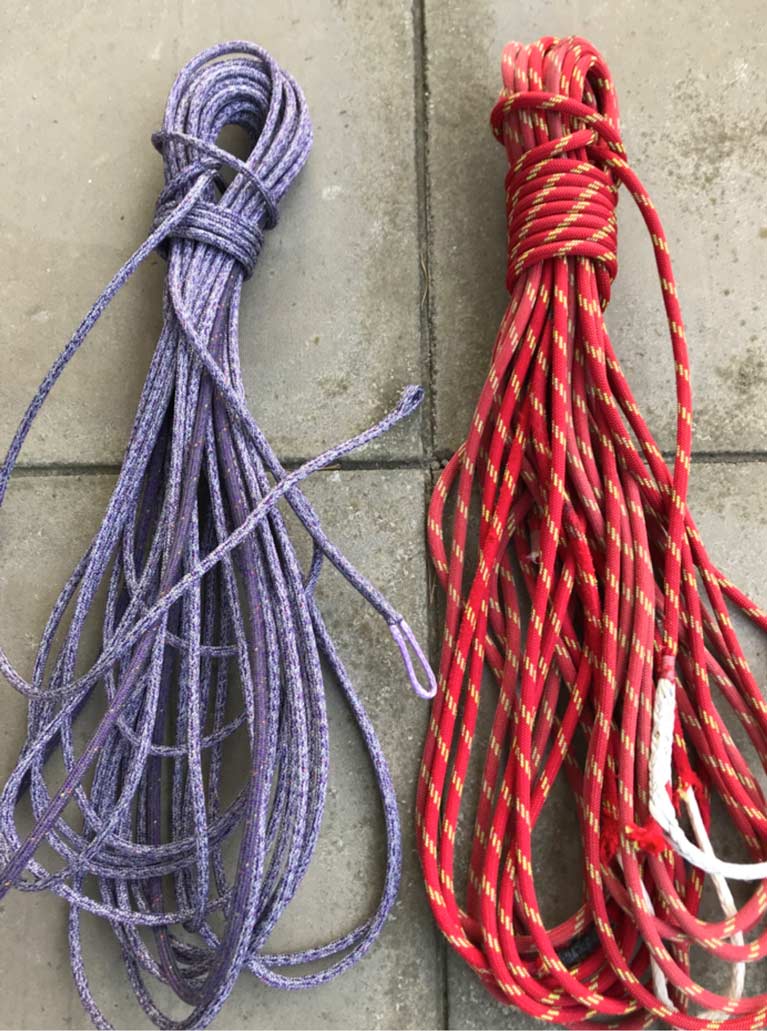 A comparison of a replacement 8mm Halyard for a 10mm old halyard (red) prepared by Dublin firm Rope Dock. The new rope has less stretch and is significantly lighter
A comparison of a replacement 8mm Halyard for a 10mm old halyard (red) prepared by Dublin firm Rope Dock. The new rope has less stretch and is significantly lighter
Tip #4 – Make Sure Spinnakers Are Fresh
You might say, as an agent for UK sails, I would say that. But the reason I particularly pick out spinnakers is when a spinnaker gets a year or so old, it starts to lose its shiny, waterproof finish. This then means the spinnaker is always heavier, with salt and moisture, which means it does not fly as well.
In addition, because it is not that shiny, it is harder and slower to launch. An asymmetrical sail, in particular, is affected even more, as each time you gybe them, they take an extra few seconds to set, while the spinnaker slides across itself.
One design sailors will always try and get a new spinnaker each year, even if the shape of the old one is still pretty good. If not getting a new sail, at least wash it well during the winter, and if possible coat it as much as you can with a lubricant like McLube. This will certainly improve it.
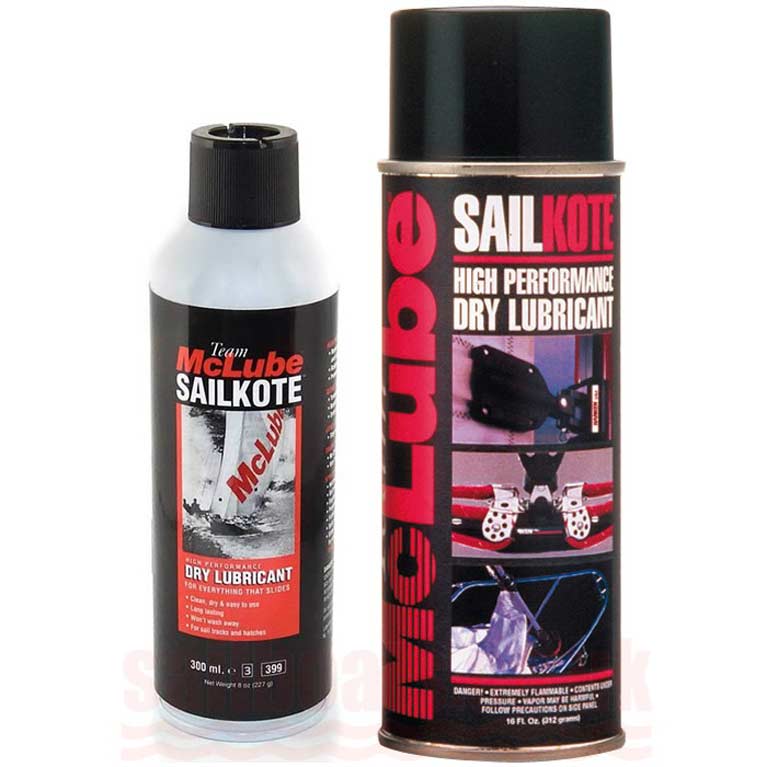 McLube dry lubricant spray—great for improving an older spinnaker
McLube dry lubricant spray—great for improving an older spinnaker
Tip #5 – Buy Racegeek or Volicetek Prostart Type Start Line GPS Device
Trying to figure out how close you are to the line is a nightmare. For those who sail at a top level it gets a bit easier, as you get used to it, but even still it is a challenge. I will always suggest to an owner to buy one of these types of instruments. In particular, it allows you to push the centre of the line, and get a great advantage as often there is a bow in the line midway down, which can allow you to get a jump on the boats around you if you are right on the line. You just ping both ends before the start and the device will tell you the rest.
In recent years, these devices have become even more sophisticated and can interface with a boats normal instruments, like the Irish designed Race Geek, Marketed by Ric Morris from Dublin. This Racegeek was on the winning J70 at the J70 worlds in 2018. The second advantage of these devices is they also act as a backup for your Normal instruments as along with starting options, they will have speed, heading and a lot of other information.
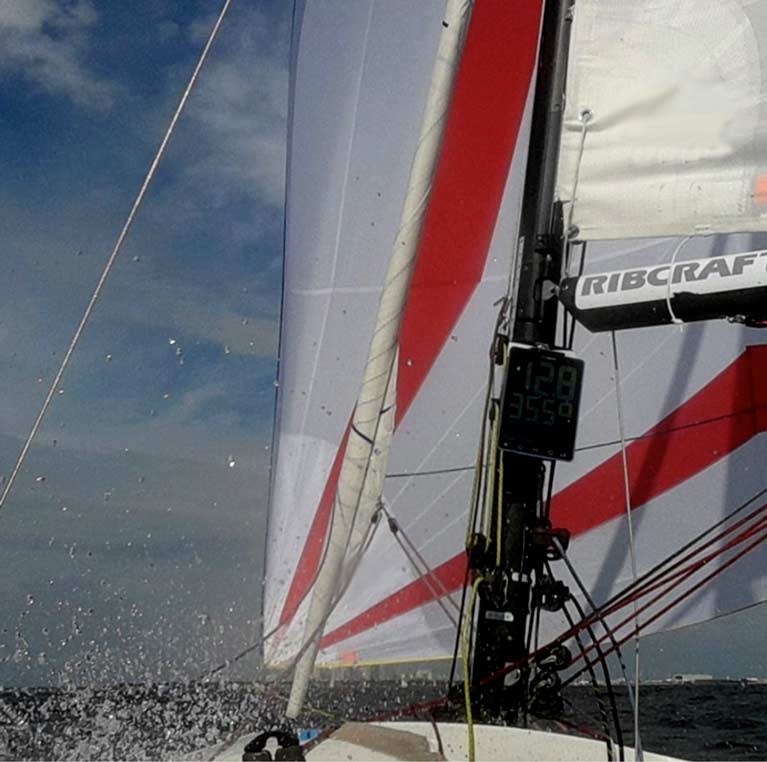 A mast mounted Race Geek instrument shown working on a 30 footer
A mast mounted Race Geek instrument shown working on a 30 footer
Tip #6—Look at Optimising Rating
Most boat owners at this time of the year just renew their IRC rating, look at the TCF compared to last year and that’s it.
There are a host of things that can and should be looked at. It is not unknown for there to be inputting errors and if it happens that yours was input incorrectly the first day unless it is pointed out to the Rating Office, it will stay incorrect.
Sailmakers have access to a database of all the sail measurement data for all IRC boats, so can compare your boat's figures to other similar designs to see if there are differences.
In particular, they can look at successful boats within a design and see where they are different and give you the option of duplicating this.
For owners who may think of changing a boat from overlapping headsails to non-overlapping Jibs, all this very often can be seen from other owners who have already done this, to see if it was a success.
The bottom line is to consult your sailmaker who not only has a wealth of knowledge but also has IRC data that he can use.
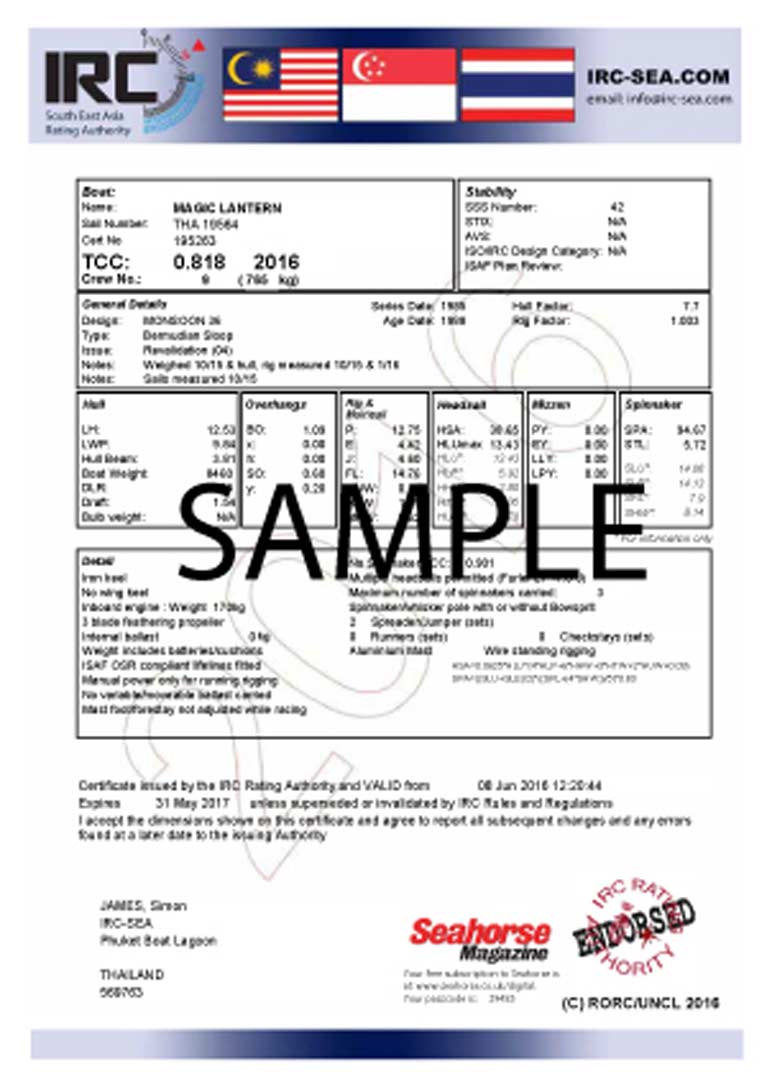 A sample IRC Cert
A sample IRC Cert
Fair sailing for the season.



























